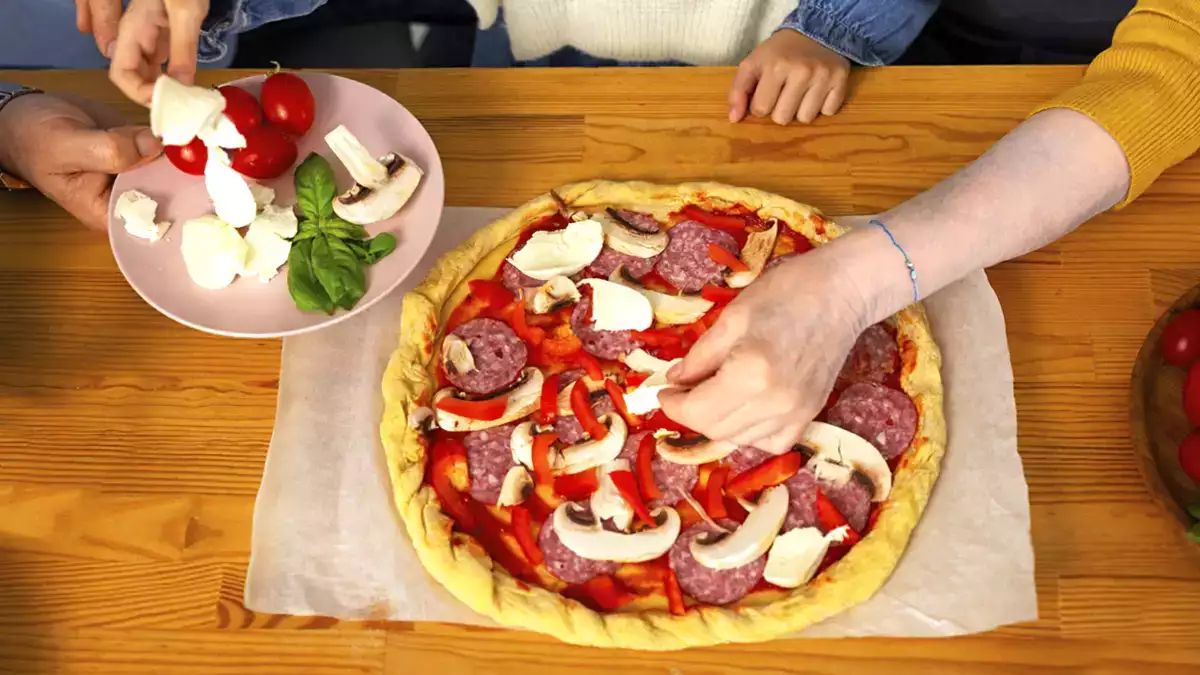14 smart tips for college students to save money on food without sacrificing taste or nutrition

Being a student means learning to live with three unfinished business: sleep, money and a half-empty fridge. But just because your wallet looks like a desert doesn't mean you have to eat like a castaway. College life brings with it independence, chaotic schedules and the need to eat without going broke. With a little organization, it is possible to eat varied, tasty and cheap.
Here are 14 tips to survive the whole month without relying on your mother's lunch box or macaroni and ketchup.
1. Plan (even if it's on a bar napkin)
Improvising is expensive. If every night, at the peak of your hunger, you go down to the supermarket at the last minute to decide on dinner, you will end up overpaying and eating worse. A minimum of planning and your stomach (and your account) will thank you.
Of course, there are exceptions. There is the so-called magic hour at the supermarket: when closing time approaches, many fresh products drop in price because they expire soon. Going with that strategy in mind can be a timing trick that saves a lot.
2. Seasonal products = bargain
Seasonal fruits and vegetables cost less and taste better. In autumn, pumpkin is not just a Halloween decoration: it could be the base of a cheap and comforting soup or sauce. Hang a seasonal calendar on the fridge and you'll have passed half the subject of cheap eating.
3. XXL casserole, happy freezer
Make a huge lentil stew or a chicken stew. Eat today, save for tomorrow and freeze for a month from now. Your future self will celebrate it as if the only topic you had studied fell on the exam.
4. Canned vegetables: the Tinder of the cheap kitchen
They are always a match. You open a jar and in no time you have a chickpea curry, a quick hummus or a chili with beans for dinner with friends. They cost little, are filling, nutritious and go well with just about everything.
5. Pasta and rice, your perfect roommates

They are cheap and filling. Pasta with tomato and tuna is good for two days; on the third day ask for variety: mushrooms with cream, homemade pesto or cherry tomatoes with feta. With rice, the same thing: a la cubana, a simple risotto or a quick sauté. They are still inexpensive, but now they look like adult cuisine.
6. Cook once, brag twice
Today's pasata bolognese sauce can be a burrito filling tomorrow. With a little creativity and cooking in quantity, your fridge will look varied... as if you've cooked three times when in fact it was only once.
7. Ultraprocessed = ultra expensive
Frozen pizza seems to be your friend, but it ends up being expensive. The same thing happens with microwave lasagna or chicken strips already cooked: they serve to get out of the way, but in the long run your pocket notices it. A frozen pizza costs around US$ 4; with pita bread, tomato and four things (or two) that you rescue from the fridge, you can make a homemade one for less than 2. Is it worth it or not?
8. Vegetable soups and creams, great allies!
A pumpkin, a couple of potatoes and a blender, and you've already solved dinner for very little. The best thing is that this infallible formula works wonders with almost any vegetable (carrots, zucchini, cauliflower...). To finish off the dish, add some croutons, sunflower seeds or a drizzle of olive oil on top.
9. War against waste
- Make magic with leftovers: Yesterday's sad rice can be reborn in a stir-fry with vegetables; roast chicken, in a fancy sandwich; and poached vegetables, in an omelet that looks like it was meant to be from the start.
- Gourmet recycling: The same goes for stale bread: it becomes croutons for a soup, toast for breakfast or grated for breading. Nothing is thrown away, because every dollar counts. Call it gourmet recycling or survival cooking. And if you're short of ideas, TikTok is full of proposals under the hashtag #zerowaste (and on Petitchef too).
10. The freezer, not only for making ice cubes.
Sliced bread, herbs in ice cubes, tupperware with leftovers... it all fits. Think of the freezer as the "save game" button in video games.
11. Better (and cheaper) if it is homemade.

That US$2 coffee you buy before class tastes just as good in a thermos made at home... and you save a lot of money per month. The same with dinners: instead of always going out to restaurants, organize meals in the apartment and let everyone bring something cheap.
12. Apps and brochures: bargain hunting
A student with a cell phone in his hand not only checks memes: he can also hunt for deals. Download supermarket apps or keep an eye on digital brochures: 3x2 discounts, etc. With a couple of alerts, your fridge will be full without emptying your wallet.
13. Big and half-baked purchases
If you live with other people (and there is a good feeling), share the cost of some ingredients. It is cheaper to take bottles of oil, sacks of rice or packs of yogurt and then divide them.
14. Eating from a university menu
And why not, you can use the canteen of the uni from time to time. It is usually cheaper than cooking fresh meat or fish at home: for 4 or 5 euros you have a complete and balanced dish that saves you from preparing an expensive dinner in the apartment. And if there are leftovers, even better: take them with you in a airtight container.
The real master
Everyday food in a student apartment is little like batch cooking on Pinterest or Instagram's impeccable recipes with a thousand ingredients. Here the logic of sharing, reusing, learning to buy and eating beyond the kebab rules. Beyond notes and exams, university life is also a true master's degree in saving.
 Patricia González
Patricia González
Comments